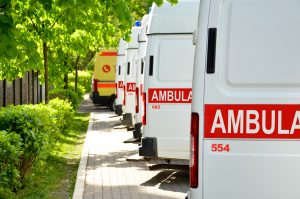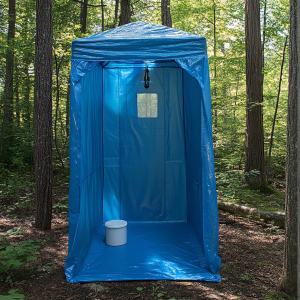In survival situations, the group medic must be able to deal with major injuries, such as bleeding wounds and broken bones. That doesn’t mean that all medical issues will be life-threatening, however; there will be many that affect the quality of life of people in the community, such as today’s topic: headaches.
If you’re being chased by bears, headaches may seem pretty minor, but they can affect work efficiency in settings where everyone has to be 110 percent. The medic has to have knowledge and some strategies to treat them.
Although the grand majority of headaches are benign (even if they don’t feel that way), some could be a sign of an imminent event, such as a stroke. You’ll need to know how to identify the different types and act accordingly.
You might be surprised to know that brain matter itself doesn’t have any pain receptors. There are several structures around the brain that do, however, such as muscles, blood vessels, and sinuses. When stimulated, nerves associated with these structures can transmit pain signals to the brain, resulting in headache pain.
CAUSES OF HEADACHE PAIN
Headaches are common components of flu syndromes and many other illnesses. There are almost more causes for headaches than you can reasonably write down. They include:
- Dehydration
- Stress
- Sinus or ear infections
- Sleep deprivation
- Teeth Grinding
- Hormonal changes
- Caffeine or alcohol excess and withdrawal
- Exposure to environmental toxins
- Hunger
- Adverse reaction to medications
More serious concerns would include an imminent stroke, brain tumors, nervous system infections like meningitis, glaucoma, and much more.
DIAGNOSING HEADACHE PAIN
Evaluating a headache involves determining what the symptoms are, the risk factors (e.g., high blood pressure), what makes it better or worse, and a physical exam. The part of an examination which evaluates the nervous system is called the “neurological exam”. Check reflexes, strength, sensation, movement, balance, coordination, vision, and hearing on both sides. It’s especially important to note any differences on one side versus the other. A typical neurological exam is explained in the 4th Edition of our book “The Survival Medicine Handbook: The Essential Guide For When Help Is NOT On The Way.”
For a live demonstration, check out the video below:
If you find abnormalities on exam, like weakness on one side, you may have to entertain the possibility of, say, damage caused by a stroke or other acute or chronic medical issue. In that case, there may be little you can do off the grid.
This link goes to a video discussing strokes, also known as “cerebrovascular accidents” or CVAs.
TYPES OF HEADACHES
Once you have determined that the neurological exam is normal, you will have to determine what type of headache with which you’re dealing. Two general categories of headache exist: primary and secondary. Primary headaches occur when the pain in your head isn’t caused by an underlying problem; it is the problem. If the headache is triggered by something your body is dealing with, like allergies or a chronic illness like hypertension, it’s considered a secondary headache.
PRIMARY HEADACHES
Primary headaches can be episodic or chronic. An episodic headache frequently lasts from 30 minutes to several hours but don’t occur more than 15 days out of the month. Chronic headaches are more consistent; more than 15 days a month for at least three months. These are more difficult to treat, especially off the grid.
Common primary headache types include:
- Tension headaches
- Migraine headaches
- Sinus headaches
- Cluster headaches
- Facial headaches (known in Medical-ese as “trigeminal neuralgias”
In future parts of this series of articles, we’ll discuss each of the above in detail, including diagnosis, treatment, and prevention.
SECONDARY HEADACHES
Secondary headaches originate from an injury or illness. They can be caused by:
- Trauma to the head and neck
- Tumors
- Seizure disorders
- Infections of the central nervous system, like meningitis
- Surgical complications
- Abnormalities in blood vessels (called “aneurysms”)
- Medical illnesses like uncontrolled hypertension (high blood pressure)
Collections of blood in the brain (called “hematomas”) or blood clots in blood vessels (strokes) can occur as a result of many of the above.
WARNING SIGNS
The grand majority of headaches are primary and not life-threatening. Symptoms that give a hint that a headache is something serious include:
- A new or different type of headache
- Sudden onset of severe pain
- Vision loss or abnormalities
- Altered mental status
- Loss of ability to move a part of the body
- Pain that wakes a patient suddenly from sleep
- Pain that worsens with movement of the head
- Neck stiffness
- Fever
- Headaches in the elderly
If these symptoms appear in normal times, an immediate trip to the emergency room is in order. The faster the patient is treated, the better the chance for long-term recovery. Off the grid, there are strategies that may or may not serve as interventions to improve the end result. We’ll cover these as well as how to deal with the more common primary headaches (tension, migraine, sinus, cluster, etc.) in future articles. The family medic in a long-term post-disaster scenario, however, must always be realistic in their expectations when events throw them back (medically) to the 19th century. You can only do what you can, with what you have, where you are.
Joe Alton MD











 Dr. Joe Alton
Dr. Joe Alton










